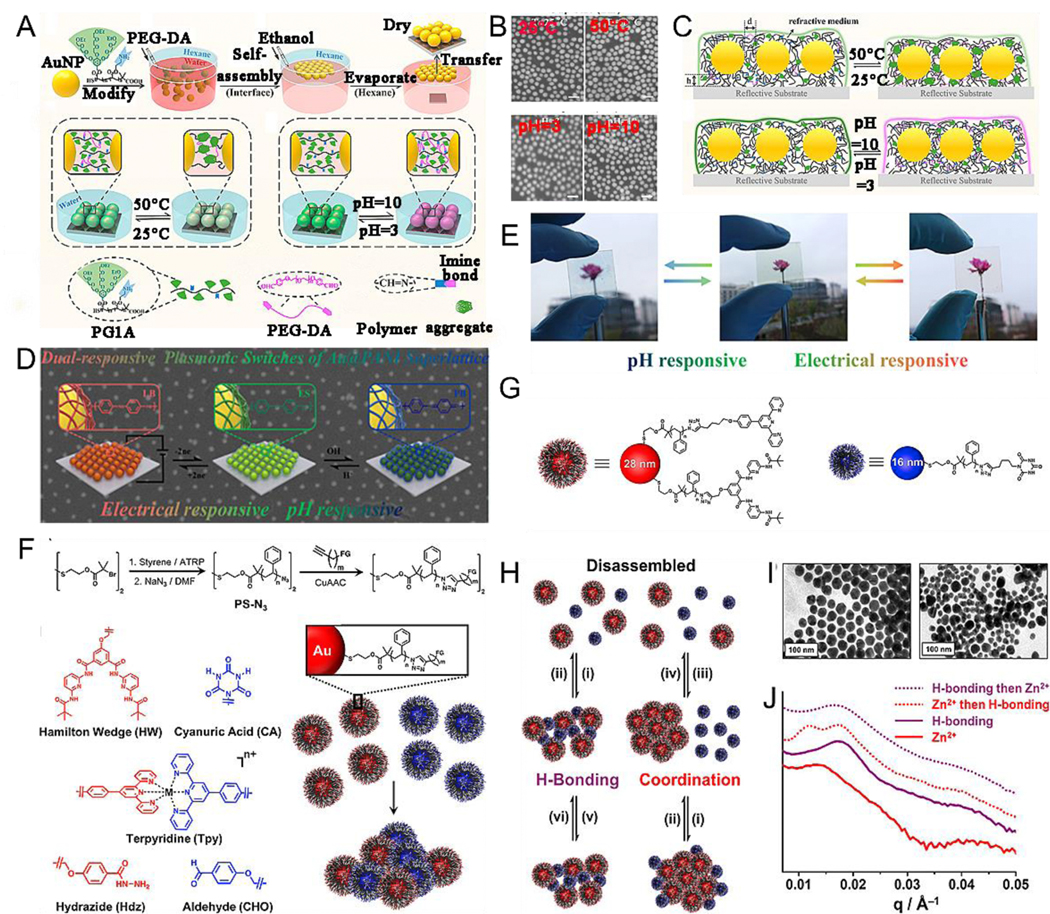Fig. 7.

Proposed mechanism of the preparation process of freestanding AuNP self-assembled monolayer films (SAMFs) at the air–water interface. (B) SEM images of SAMFs on a silicon wafer under the aqueous solution with different temperature and pH. (C) Schematic illustration of SAMFs transferred on silicon wafer under various conditions. (D) Schematic illustration of electrical and pH responsive plasmonic switches. (E) pH- and electrical-responsive color change. (F) General synthetic route, chemical structures of the different functional groups and proposed mechanism of the assembly. (G) Schematic illustration of the nanocomposite tectons self-assembled systems for examining multi-stimuli responsiveness. (H) A proposed mechanism of the different responsiveness (i) cool; (ii) heat; (iii) heat, addition of Zn2+ ion; (iv) heat, addition of Tpy; (v) addition of Zn2+ ion; (vi) addition of Tpy. (I) TEM images of the assembly triggered by hydrogen bonding interactions only (right) and coordination interactions only (left). (J) SAXS traces for the hamilton wedge-Tpy and cyanuric acid-based multistimuli responsive nanocomposite tectons assemblies under various conditions. (A-C) Reproduced with permission.[152] Copyright 2018, American Chemical Society. (D, E) Reproduced with permission.[153] Copyright 2020, American Chemical Society. (F-J) Reproduced with permission.[154] Copyright 2019, American Chemical Society.
